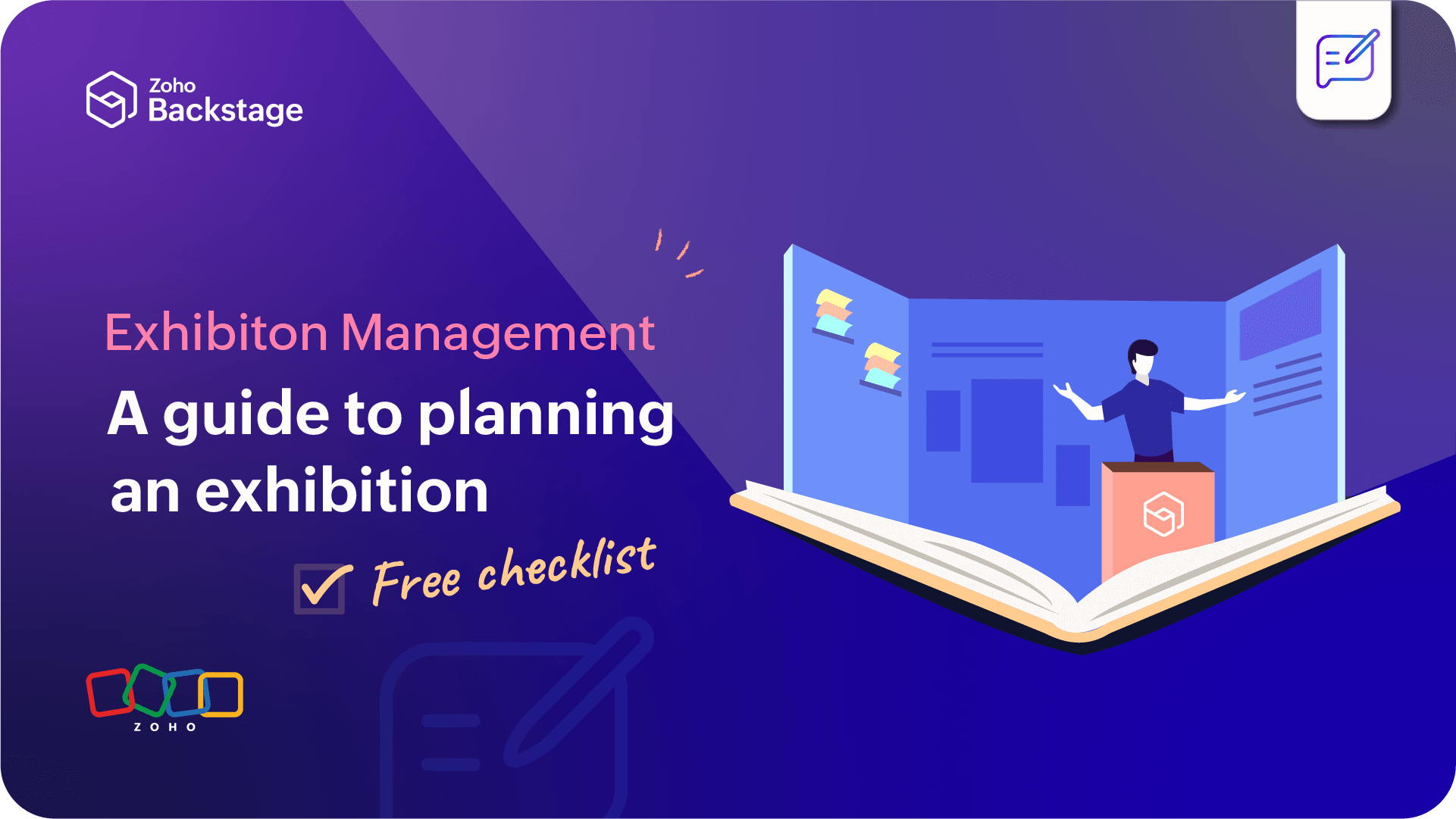- HOME
- Management
- 5 common mistakes of unsuccessful virtual events (and how to avoid them)
5 common mistakes of unsuccessful virtual events (and how to avoid them)
- Last Updated : August 18, 2023
- 2.2K Views
- 6 Min Read

Everyone in the events industry has been a part of at least one failed event. When virtual events came to the forefront in late March 2020, pretty much the entire industry winged it. Some events got raving reviews, some were meh, some failed to reach their goal, some flopped majorly, and some never got off the ground. With each event (each experiment), we learned something new about virtual events and started pushing the boundaries further.
What began as webinar lookalikes slowly became multi-day virtual experiences. The paradigm has now finally shifted, and virtual events are here to stay. While it’s always okay to try out new things, it’s time to stop with the rookie errors. Listed below are five of the most common mistakes that have led to many a virtual event flops. We’ve spoken quite extensively on what you need to do to make your virtual event shine, but this time around we’re talking about what you should avoid if you want to host a successful virtual event.
Technological issues
A virtual event is completely dependent on technology. From selling tickets online through event ticketing platforms to airing the event through webcasting software, from interacting with virtual attendees on the day of the event to collecting feedback once it is over, everything happens through one software or the other. Then there is all the technical equipment that goes into the production of a virtual event: cameras, microphones, lighting equipment, tripods, and internet routers, to name a few.
An event app with bad user experience (UX), a malfunctioning camera, or weak internet strength can all ruin the virtual event experience. Amateurish production will also show, and attendees—who’ve seen professionally produced YouTube videos and TV shows—will feel the difference and find your virtual event lacking. This might even lead to them giving up on your event midway. So be sure to invest in good virtual event echnology and take it for a few test runs before the actual event. More events than we can count have failed due to technological glitches.
Inexperienced speakers
Speakers are as new to virtual events as event organizers, and they know even less about it. However, most of them do have at least some experience with webinars. This could be seen as a plus and a minus when it comes to talking at a virtual event. Let’s start with the pros: they’re used to webinar tools and online interaction features like polls and chat, so they’ll adapt to your webcasting service faster. They also have more experience talking in front of a webcam.
The negative is they’re so used to the webinar format (with its presentations and long speeches) that they are more used to instructing their audience than interacting and engaging with them. And unlike webinars, where people come to learn something new, with virtual events attendees come to be surprised and thoroughly engaged. So the webinar model will not work. This is something both the event planner and speaker have to keep in mind when planning a session’s content. Other than that, here are five other ways you can help your speakers get comfortable with virtual speaking:
Do a “dress rehearsal” of the session so the speaker is not left unaware or confused during the actual session.
Get speakers to upload all their content beforehand so there’s no rush on the event day.
Give the speakers a rundown of all the engagement tools available in your webcasting service so they can prepare their content accordingly.
Send them an onboarding manual for speakers with information like the different session formats, help documentation for using the webcasting service, commonly asked questions, and the event code of conduct. This way they know what to do.
Create a private chat group for speakers so they can get to know everyone and help each other.
Speakers are the building blocks of a successful event, so make sure that you choose the right speakers and give them the tools they need to put out an interesting show.
No avenues for event networking
One of the biggest reasons people attend events is networking. They want to make connections with others who have similar interests or work in the same discipline. They do this to build their professional and social network. With virtual events, networking is a big challenge as people don’t know whom to talk to. Most of the event is experienced alone through screens, and it’s a little intimidating to make the first move online as opposed to in person when you have the other person’s non-verbal cues to guide you.
That’s why event organizers should go the extra mile and help attendees break the ice. You can design networking games in the event app, use a matchmaking service to connect attendees with similar interests or create public forums where people can discuss a particular topic. When you take the initiative here and create ways for attendees to connect holistically without having to try too hard, more people will be able to network. This will benefit both the attendees, who will find their needs satisfied, and also you, as they’ll probably return for your future events. Not only is this event a success, but you're setting your future events up for success too.
Boring program
Content will always reign supreme. But even more so with virtual events. In-person events can use of a lot of things—lighting, decor, music, and even smell—to attract and stimulate attendees. All of these elements contribute to its mood and atmosphere, along with the content. However, most of these elements can’t be replicated successfully in virtual events, and neither can the high-energy environment of in-person events.
For virtual events, content is possibly the only element available at an organizer’s disposal when it comes to catching an attendee’s interest (and retaining it). Pay attention to your content and make it more than just PowerPoint presentations and keynote speeches. Make use of interactive session formats like breakout sessions or Flipped learning so they are interactive.
Another point to note is the length of the sessions. You can’t have long sessions with too much content even if the content is interesting. While this works for live events, people just don’t have to patience to stare at their screens for hours at a time, especially if they’re not actively involved in it. You can also incorporate a few wellness breaks into the day to avoid virtual event fatigue. The quality of your content is important, but how you present it is just as important.
Too many distractions
You probably already know this: the human attention span is decreasing a little every year. Today, it’s eight seconds—less than the attention span of a gold fish. Not only is our biology working against us, the event also has to compete with an attendee's family life, phone calls, emails, and social media—all of which will require their attention. So if you’ve planned a 10-hour event, you’re event is not going to make it. This is also the case with long sessions and boring content. If attendees are not glued to what’s happening on screen, they might just start scrolling through their social media feeds or surfing the internet.
It’s not just their lifestyle either—you could also create distractions from your side. Say you’ve created a cool background for your virtual stage using green screen technology. A background that has too many elements and too much contrast can also be distracting. It’s better to keep backgrounds minimalistic. Your environment should also be conducive to listening—less background noise, optimal lighting, clear camera production, and good sound. All of these contribute to holding attendee's attention. The less distracting your event is, the more they’ll pay attention to it.
Avoiding these five mistakes will not guarantee an event’s success—a lot of other factors, unique to your circumstances, will have to be weighed. What it will do is increase the probability of your event’s success. It’ll take time to master every step, and along the way you’ll probably make a few dozen more mistakes. But that’s perfectly okay, because there’s never a better lesson than failure.
If, like us, you're more of a social person, let's connect on Twitter (@ZohoBackstage) and we'll keep you up-to-date with all the latest event news.
 Nisha
NishaMarketing and content at Zoho Backstage. Cultural misfit. Armchair traveler. Productivity geek. Sometimes, I write poetry. Sometimes, it rhymes.






